Elevate Yourself to Increase the Distance You Can High-Stick

Most of the time when your fly fishing for trout, the last thing you want to do is elevate yourself. In most scenarios, that will usually do more harm than good, by increasing the chances of trout spotting you and spooking. Notice I said “most scenarios”, every once in a while, an angler is forced to go against traditional principles to find success. The other day, I found myself trying to fish an eddy and slow water seam on the far bank. Making the cast wasn’t the problem, it was getting a long enough drag-free drift to get my fly to the fish. Even with my best high-sticking efforts, every cast the super fast water between me and my target water would grab my fly line and suck my flies out prematurely. After a couple minutes of struggling with my drifts and failing to get any bites, I decided to climb up on a boulder next to me. This elevated me three feet, and allowed me to keep 100% of my fly line off the water and get that long drag-free drift. I caught three trout after
Read More »Dickey’s Tarpon Muddler
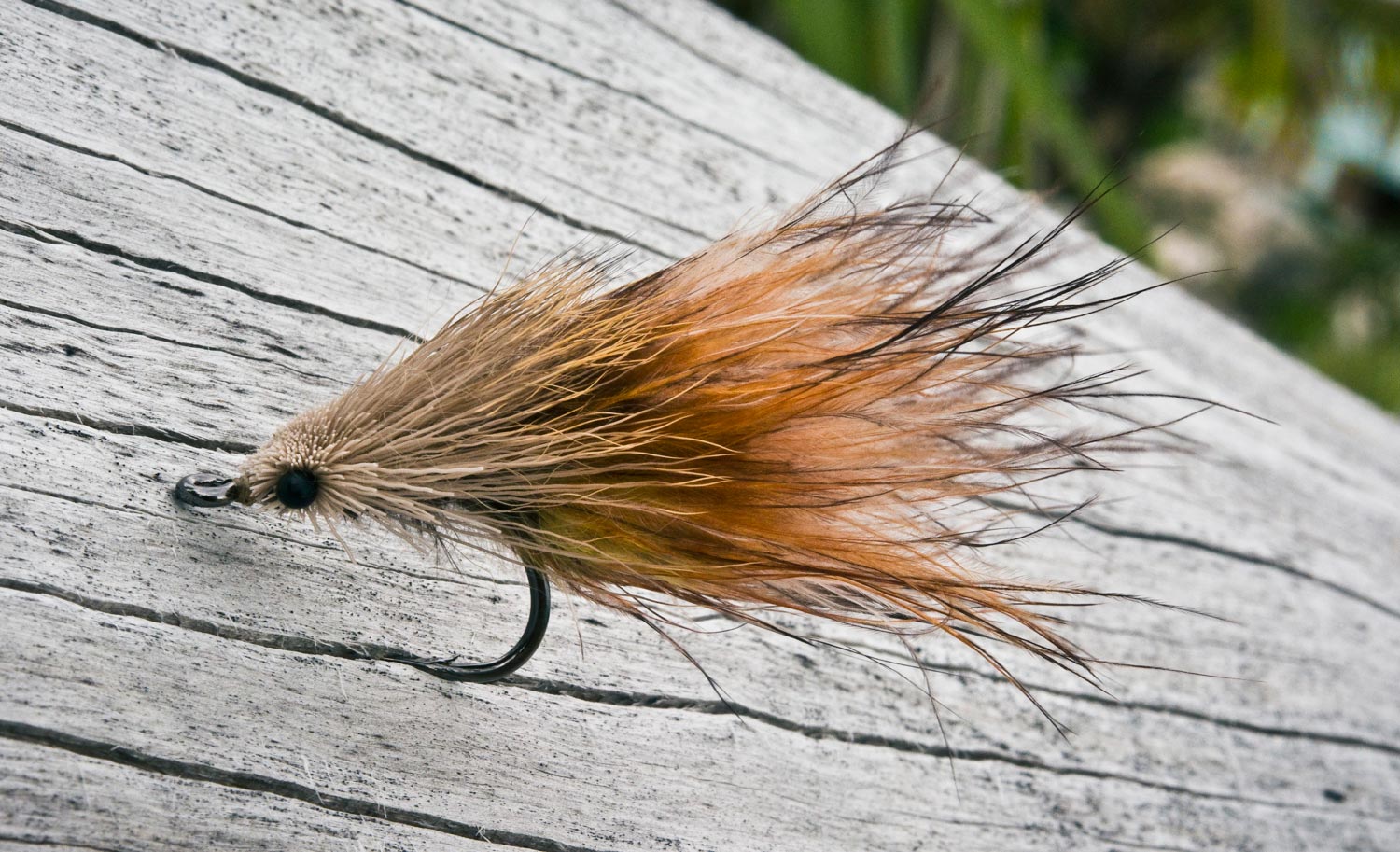
IS THERE ANYTHING MORE SATISFYING THAN CATCHING A FISH ON A FLY THAT YOU TIED YOURSELF? WHAT ABOUT WHEN THAT FISH IS A BIG, LAID UP TARPON?
Where going to spend a little time helping you do just that. A couple of my good friends are going to share some of their favorite saltwater patterns with you. Joel Dickey is going to kick it off with this great pattern of his. Dickey’s Tarpon Muddler.
This is a fly that Joel uses with great results for laid up tarpon and for rolling tarpon in the early morning. It’s a simple tie that uses some sexy materials and some traditional techniques. It has a great profile and an enticing action.
Watch the video and learn to tie Dickey’s Tarpon Muddler. It might just put you on the fish of a lifetime.
Read More »Fly Fishing Bass: 5 Tips for Fishing Frog Patterns Around Grass

SOME OF MY MOST MEMORABLE DAYS CHASING BASS ON THE FLY HAVE COME FROM ME SPENDING THE DAY POPPING AND WAKING FROG PATTERNS ALONG THE SURFACE.
I grew up fishing for bass, and although trout fishing has stolen the majority of my fly fishing attention over the years, I’ve always held a special place in my heart for catching bass on the fly. I’ve got friends that don’t see the coolness in fly fishing for bass, but that’s because most of them haven’t put in enough time on the water to experience perfect fishing conditions, and witness the thrill of bass smashing their fly cast after cast. Bass are amazingly acrobatic fish, and they provide more than enough pull and rod bend to justify fly fishing for them. If you haven’t explored this area of fly fishing, I highly recommend it.
The other day, Louis and I left our houses at 2:45 in the morning to drive across the Georgia State line, and fly fish for bass on Lake Guntersville. Louis was doing a shoot for a new bass lure company, and I was lucky enough to get invited to tag along. Normally, it would be a real challenge to drag me out of bed at this hour, but Lake Guntersville is considered one of the top bass fishing lakes in the entire country. More importantly, the lake is famous for its unbelievable frog fishing that generally starts in June, and runs through the summer months. Lake Guntersville hosts several professional bass tournaments throughout the year, and in 2014, it will host the most famous of all tournaments, The Bassmaster Classic.
During the tournaments on Lake Guntersville, it’s not uncommon for bass anglers to weigh-in five fish sacs, well over 35 pounds.
That’s right, we’re talking about an average fish weight of over seven pounds. If that doesn’t get you excited about visiting Lake Guntersville, I suggest you get someone to make sure you have a pulse. The reason this lake can grow and sustain such large
In Our Fly We Trust
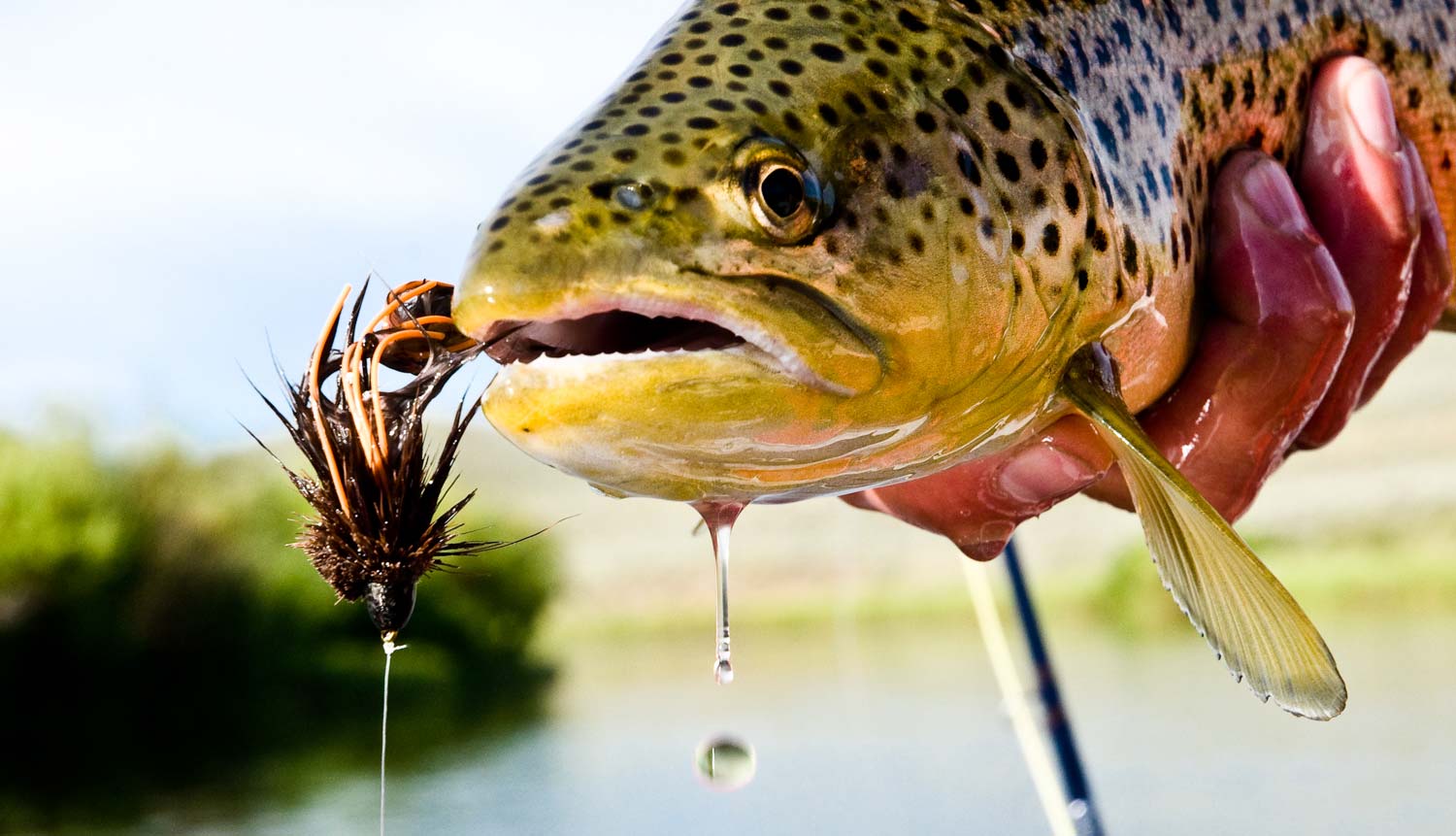
By Jesse Lowry
Fishing is as much of a mental game as any sport.
Whether it’s having confidence in your gear, the conditions, your technique, hell, even in the fish, the psychological factors play a role in how we perform on the water.
While a multitude of factors can be considered when deciding where, when, how, and with what we fish, having too much focus. or a focusing only on the negative factors, can be what stands between us and a successful day on the water. For instance, worrying that you can’t make a cast, or the weather is going to put the fish down, or these currents are going to make it tough to get a good drift, or the tide might not be ideal for this spot, or maybe I don’t have on the right fly.
While these are all valid factors to consider, they are all directed at the negative aspects of the proverbial hand we are dealt. This train of thought is tough to change. It is in our hard wiring. We are inherently risk averse as a species and thus try to avoid negative outcomes by using past experience as a guide. This leads to a bias where we focus on how we can fail as opposed to how we can succeed. Changing this type of thinking takes time and has to be done in baby steps. In my opinion a good place to start changing this biased way of thinking is with the fly we tie on.
I’ve had the same conversation with numerous fly fishermen in different parts of the world, regarding different species of fish and the consensus has been the same. A fly
Read More »Checking Your Attitude
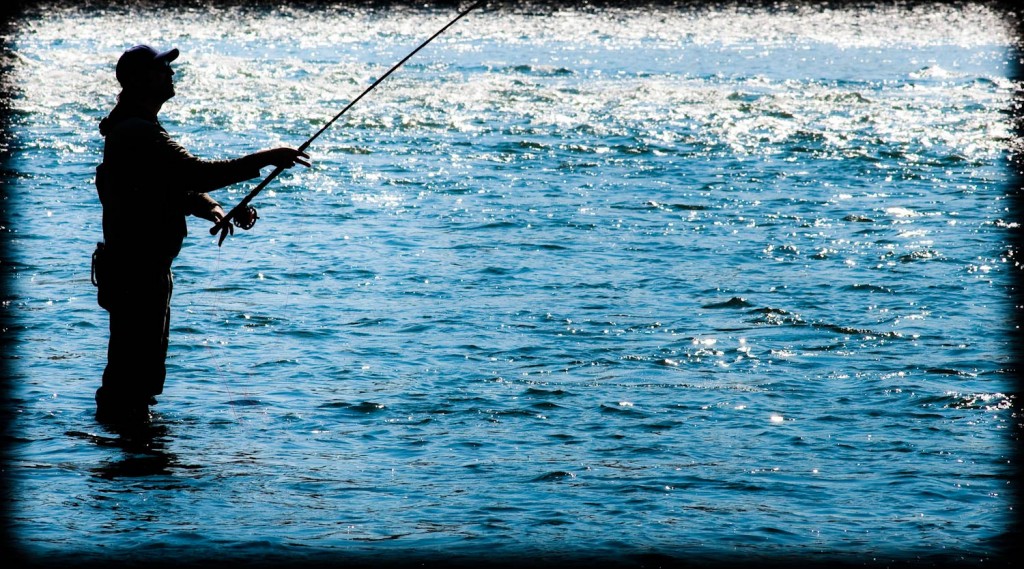
IF YOU READ THE COMMENTS ON OUR POSTS YOU’LL OCCASIONALLY SEE THE NAME TOM CAHILL. THAT’S MY BIG BROTHER.
Tom lives in Virginia. Too far away for us to fish together often but too close to have a good excuse.
He is an avid fisherman and a talented photographer. He and I have much in common. Our conversations may start off on motorcycles or politics but they usually end on fishing. I have often said that we are brothers, separated by a common hobby. Like brothers who marry sisters, Tom fell in love with bass and I with trout. I walked off up some mountain stream and he sped off at seventy mph across the lake.
The other day Tom left this comment to a post on G&G. It left me wondering why I’m the one with the fishing blog.
***
“Of all the cash we spend to catch a fish the biggest element is free. Years ago on one of those frustrating days my friend Rodney put it quite simply. Just as I was about to cast he asked ‘Are you going to catch one this cast?’ I responded with ‘Probably not!’ Rodney: ‘Then why don’t you just stand there until you are.”
“Now if you see me on the deck of my bass boat you may see me checking my line, checking my knot or checking my drag, but if I look like I’m just standing there staring a hole in the water, I’m checking my attitude.”
***
That’s Tom all over. Contemplative in the face of adversity. A talented
4 Tips to Get You Roll Casting Like a Pro
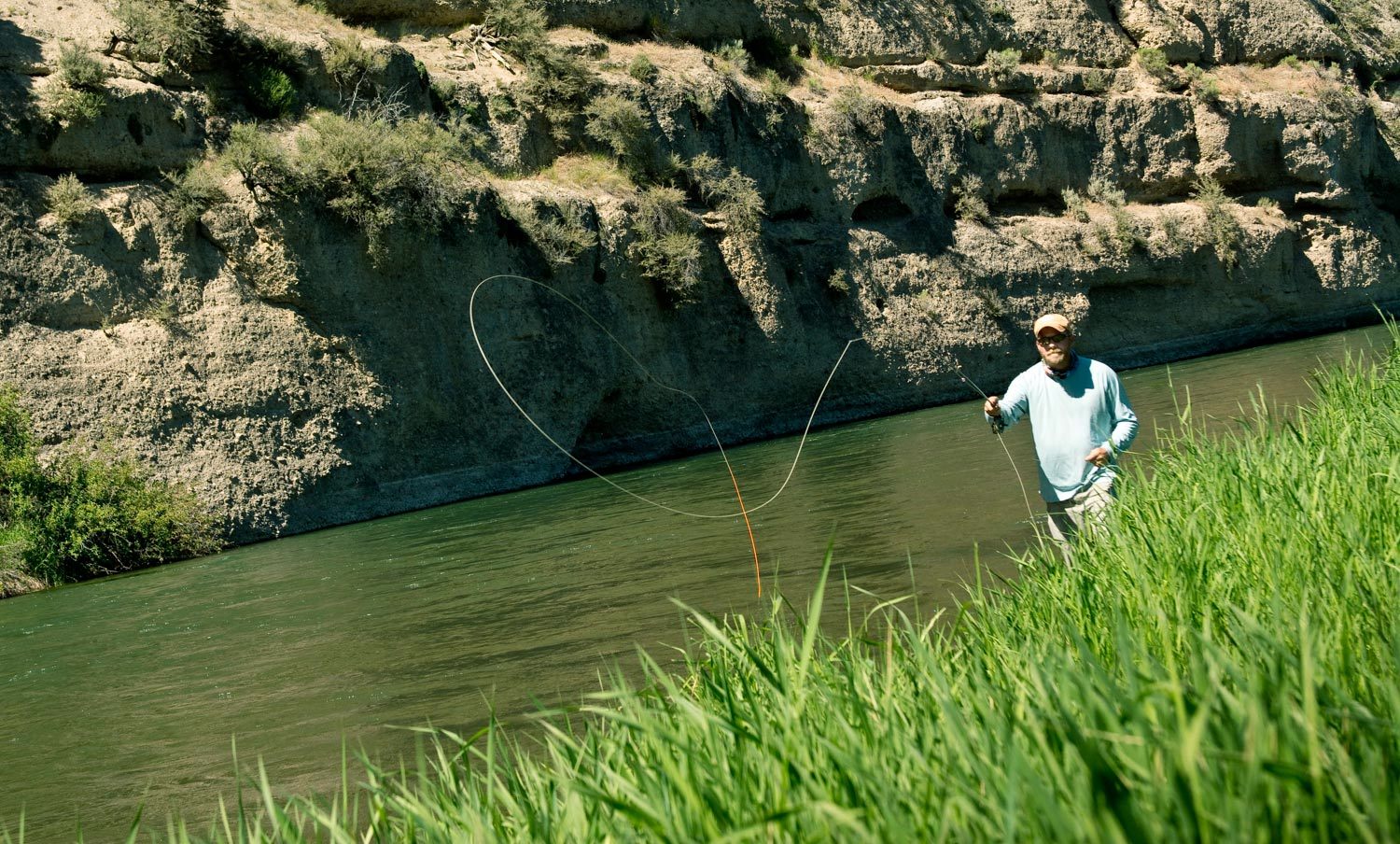
A solid roll cast is every angler’s best friend, here’s how to improve yours.
You’ve just spotted a big head break the surface on the far bank, gulping down a struggling mayfly drifting in the foam. The excitement of discovering the trophy trout feeding triggers your body’s adrenaline glands, and almost instantly, you feel your heart begin to pound, thump thump….thump thump. With the confined quarters and lacking room for a back cast, you realize your only viable option to reach the fish is going to be with an accurate roll cast. As you quickly try to present your mayfly imitation in the feeding lane, hoping that the big fish will mistake it for a natural, your fly shoots left of your intended target and lands in an overhanging branch above the fish’s lie, immediately putting down the big fish. With the fishing opportunity blown and the disappointment setting in, you find yourself asking, “What did I do wrong?”
As an avid small stream trout fisherman, I’ve lived out this exact situation many times, and felt the disappointment followed by a poorly executed roll cast. It wasn’t until I took the time to understand and learn the mechanics of proper roll casting, that I began finding myself capitalizing on fishing situations that called for precise roll casting. Looking back now on my past roll casting insufficiency, it’s clear I wasn’t at all, alone. There’s many anglers that struggle with roll casting, and that’s why I’ve decided to provide a short list of tips that’s intended to get anglers roll casting like pros.
4 TIPS TO GET YOU ROLL CASTING LIKE A PROFESSIONAL
Read More »Winter Carp

Let’s start here. Like every other preconception about the common carp, the notion that this is a warm water fish is patently false.
I’ve caught them every month of the year. In South Dakota. I’ve caught them, in numbers, while it snowed. I’ve caught them in wild places, uninfluenced by warm water discharges, bottom release dams or power plants. I’ve watched them feed under ice shelves, tail next to snow banks and crawl with their backs exposed in the only open water for a mile. As McTage Tanner once wrote and often preaches: Next to trout, there is no better flyrod target in the winter than carp.
Carp are known for their ability to tolerate extreme water temperatures. For some reason, we’ve equated that with a high survival rate in extraordinarily hot water. But the opposite is also true. Carp not only tolerate, but thrive in cold water environments. That is to say, they can and do actively feed in cold water just like they do in hot. Research suggests that they begin feeding actively in water as cool at 40 degrees and continue to pick up metabolic steam as the temperature increases. That puts their active feeding range, at the low end, closer to that of the Northern Pike than the Largemouth Bass. An active feeding range that low means carp are a viable flyrod target throughout the winter for most of the country. For those not willing to hang up the rod for 7 months and tie flies until spring, here are a few tips for stalking large tailing fish in shallow water during cold weather.
Look for moving water. River or stream fishing for carp is an extremely exciting proposition any time of year. Large fish in small water makes for challenging fights and wonderful sight fishing. Never is this more true than in the winter. Moving water allows an angler opportunities to find more addressable carp more often for a few reasons. First, moving water tends to stay open longer than still water. While the lakes are frozen, a swift small stream may be open; obviously a requirement for flyfishing. More importantly, carp that live in a small river or stream are confined to that relatively shallow water year round. When warmer, deep water is available, the carp will head there during low water temps. But in confined spaces, the carp will thrive wherever they live. To be clear, they will still congregate in the deepest pools on the stream just like any fish, but they will head for the shallows earlier and more often in small spaces.
Read More »Fly Fishing: Belly Crawling My Way to Big Beautiful Trout
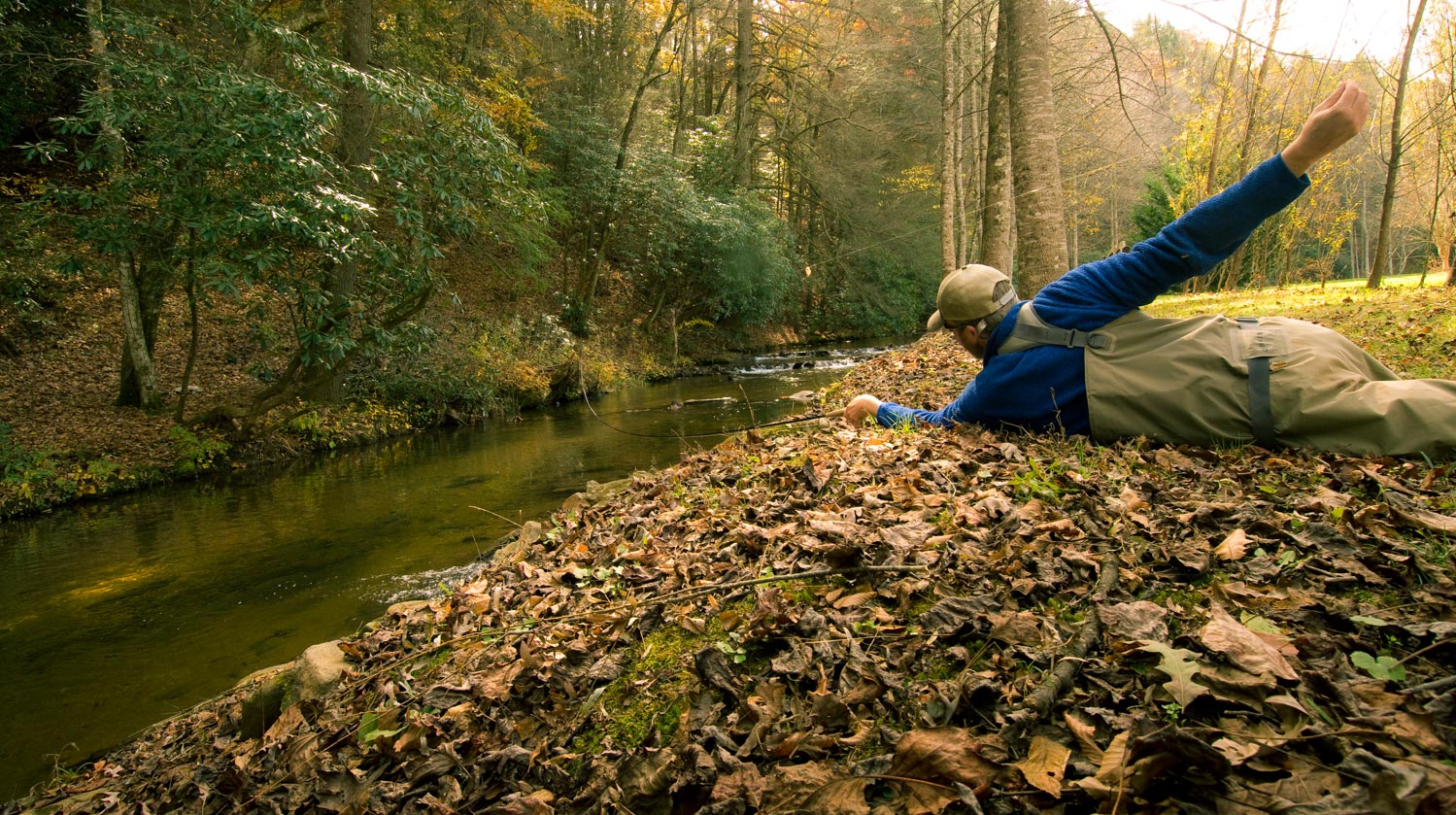
I know what you’re probably thinking, “Come on Kent, you wrote another freaking post about the importance of stealth for spooky trout? Yes, I did, but this isn’t your average stealth post. Most of us already know spooky trout require anglers to move slow and quietly. We understand how important it is to pay attention to our shadows, to work fish with our leader and fly only, and that delicate presentations are critical. Last, but not least, we’re smart enough to realize that even when luck is on our side, all we’re probably going to get is a couple good shots before the game is over.
Most of the time, if we maintain our stealth in all of the above areas, catching trout isn’t a problem. But from time to time, we do find ourselves on trout streams, when fly fishing conditions are so damn challenging that our standard everyday stealth tactics aren’t enough to get the job done. In order for us to find success in the toughest of conditions, we have to be willing to push our stealth efforts a step further. And that means going above and beyond what other anglers are too lazy or physically unable to do to catch trout. That’s right, I’m talking about dropping to the ground, and crawling on all fours into position to make a cast.
Read More »Putting Your Rod Tip In The Water Can Be A Game Changer
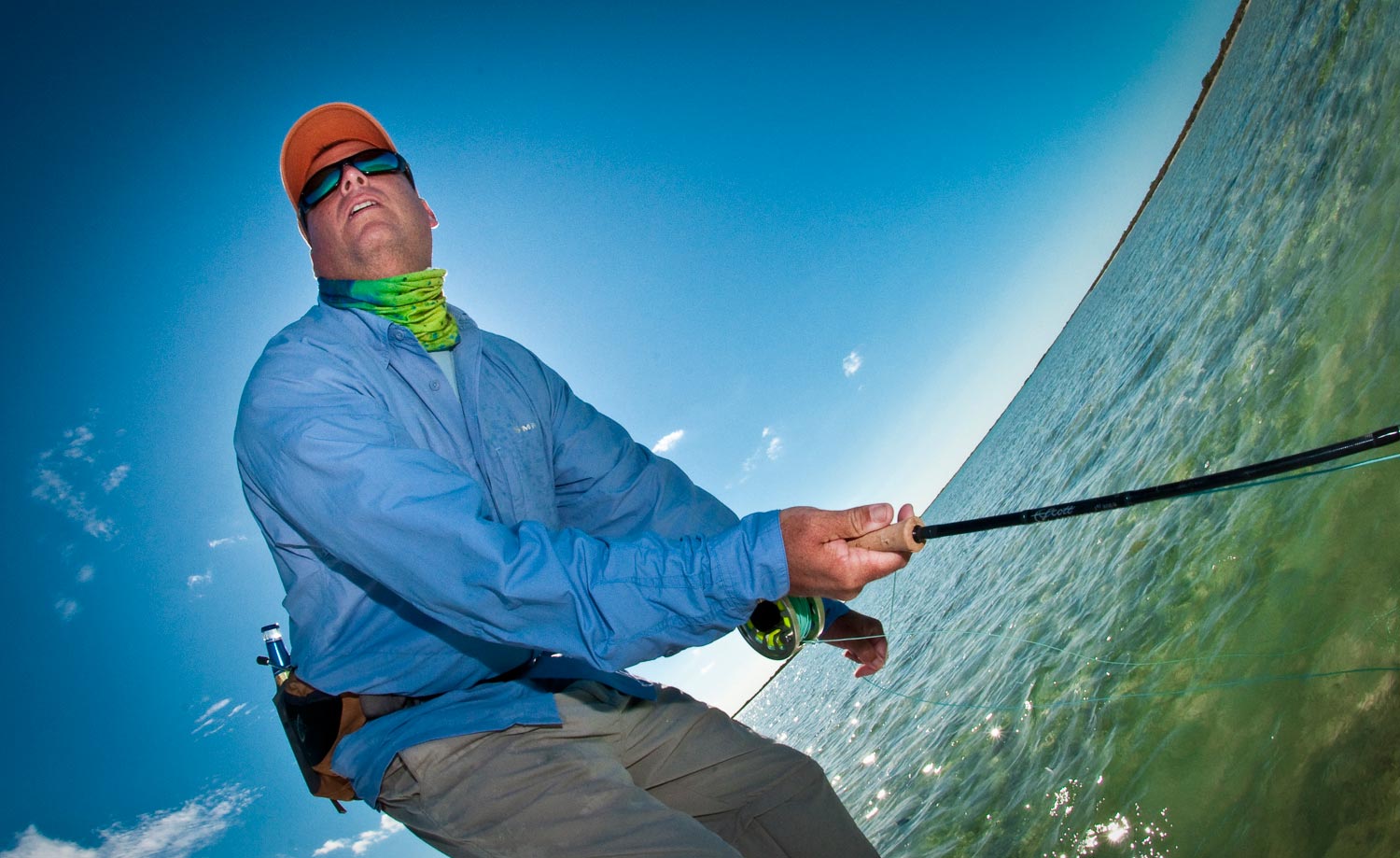
EVERYONE WANTS TO CATCH BIG FISH BUT LEARNING TO OUTSMART THEM TAKES SOME DOING.
Big fish often hold a PhD in fly selection and presentation, but any experienced angler can tell you that getting them to eat your fly is only half the battle. Getting them to the net is another thing. Most anglers do not land the first really big fish they hook. Often they don’t land the first several. Much is written about feeding big fish and far too little about what comes next. Generally speaking anglers learn to land big, strong fish the way I did, by losing a few.
Fighting a tough fish is not just a show of force. It’s a game of strategy, but also of tactics. It’s problem solving. The fish creates problems and you have to solve them. There are two such fish problems that can be solved by the simple tactic of putting your rod tip in the water.
The big downstream run
When a strong fish runs hard downstream too quickly for you to follow, you find yourself at a disadvantage. With the fish directly downstream, the angle of the hook in the fish’s mouth is perilous. Any thrashing or head shaking on the part of the fish can easily result in a long distance release. If you are unable to get downstream and establish a better angle to the fish you are left with only one choice, bring the fish to you. But how?
RS2 – One of My Favorite Picky Trout Fly Patterns
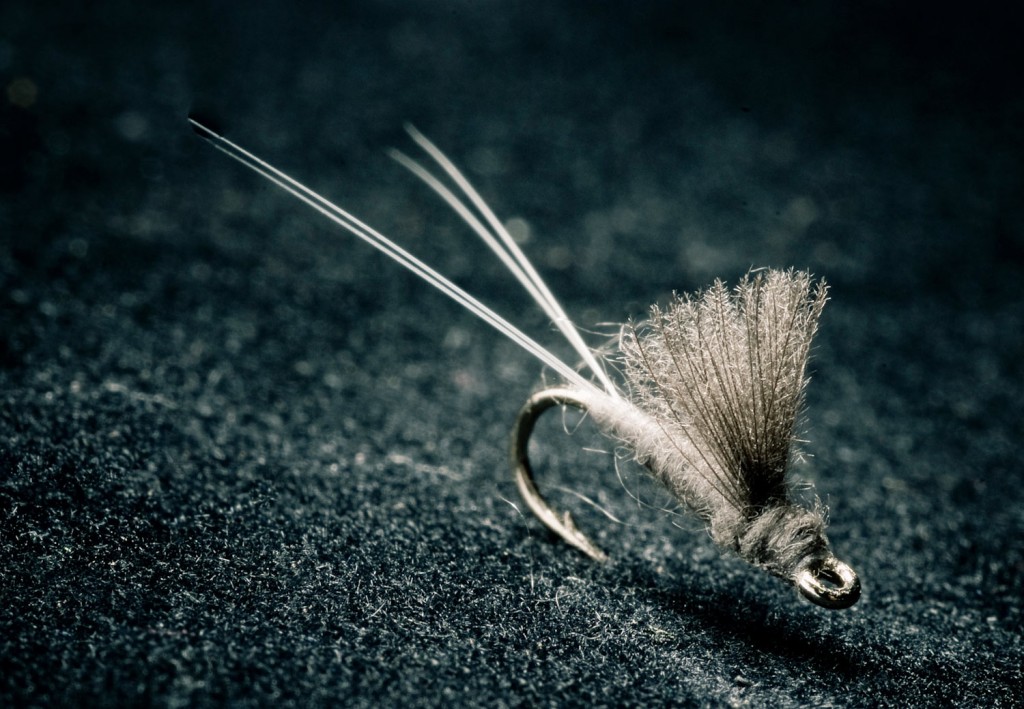
There’s days when trout fishing is so slow, it seems like conditions couldn’t possibly get any worse.
You may find yourself questioning if any trout in the stream are willing to feed at all. At other times, you’ll have no problem locating pods of steady risers, but everything you throw at them is rejected. My buddy Brad in this situation usually volunteers to row the boat, opting for cold beer within arms distance and gazing at picturesque landscapes. The dude always has a Plan B ready to be put into action, ensuring he always has a good time on the water whether he catches fish or just a buzz, and I respect that.
The RS2 fly pattern time and time again never fails to produce for me during tough fishing situations. And it really has the ability to catch fish just about any way you fish it. Fish it solo on fine tippet to wary sippers and you’ll fool a couple guaranteed. Drop it off the back of a larger and more visible dry fly if you’re having problems seeing it, and it will ride in the film, usually fooling fish on even the most technical trout water. I even have great luck fishing an RS2 as my dropper fly in a
Read More »